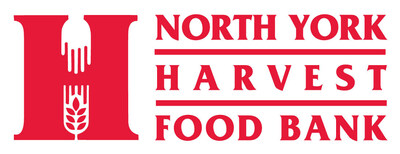Daily Bread Food Bank and North York Harvest Food Bank report more than one in ten Torontonians rely on
food banks – a 36% year-over-year increase in unique clients
TORONTO, Nov. 12, 2024 /CNW/ – Daily Bread Food Bank and North York Harvest Food Bank have released the annual Who’s Hungry report, a profile of poverty and food insecurity in the City of Toronto. In the midst of crushing rent and food prices and an unsustainable cost of living, this year’s report paints a grim picture of a city trapped in poverty.
In the last year, there were 3.49 million client visits to Toronto food banks – nearly 1 million more visits than the year prior and a 273% increase since pre-pandemic. Additionally, there were close to 155,000 new individuals who started making use of food bank services for the very first time – an increase of 222% compared to just two years ago, and over four times pre-pandemic levels.
“It is unfathomable that the number of client visits to food banks is now higher than the City of Toronto’s entire population,” says Neil Hetherington, CEO, Daily Bread Food Bank. “Our governments cannot continue to stand by as people are pushed further into poverty due to astronomical housing and food prices, years of inflation, stagnating wages and insufficient income supports. We need and demand action now.”
Who’s Hungry 2024 key findings:
- More than one in ten Torontonians rely on food banks – a 36% increase in unique clients compared to last year
- Over half of food bank clients surveyed (57%) said cost of living was their main reason for visiting a food bank
- After paying rent and utilities, food bank clients have a median of $7.78 left per person, per day to pay for food and all other essentials
- Food bank clients have a median monthly income of $1,265 – this is just over half Toronto’s Official Poverty Line ($2,397) for a single person
- Almost 9 in 10 clients (87%) live in unaffordable housing, meaning they spend more than 30% of their income on rent and utilities. 3 in 4 clients (73%) spend over half of their income on housing, putting them at risk of homelessness, and 1 in 5 clients (20%) spend 100% or more of their income on housing, leaving no money for other necessities
- Of the 1 in 4 food bank clients (25%) who have a disability, 52% rely on social assistance as their primary source of income, leaving them at least $1,000 below the poverty line each month
- 49% of food bank clients have at least one member of their household who is employed
Nearly 1 in 3 food bank clients (29%) went a whole day without eating and half (50%) missed a meal to pay for something else. “When you’re living on $300 a month, you need to rely on food banks,” said a Who’s Hungry survey respondent. Another client, who is currently unhoused, said: “I sacrifice with food. I’ve got children, too, so anything extra I give to them.”
Surveyed food bank clients were clear on what they need to be able to stop the cycle of food bank use. Stronger policies around affordable housing, decent wages, newcomer supports, and higher social assistance rates would help to ensure that every Torontonian is able to live a life of dignity and realize their right to food.
Food banks across the city are also in distress and experiencing the impact of this unrelenting crisis as they strive to meet the growing need. It took 38 years to exceed 1 million food bank visits, two years to surpass 2 million, and just one year to reach 3 million.
Every food bank visit is a policy failure. Who’s Hungry 2024 is a call to action from real individuals trapped in poverty. Together, we call on all levels of government to take accountability and to create real, long-term solutions that will put an end to food insecurity.
“Food banks cannot and will not solve this problem, and we will not stand by quietly while we are asked to do impossible things,” says Ryan Noble, Executive Director, North York Harvest Food Bank. “The supports that we provide everyday to thousands of people across our communities are critical, but do not mistake them for solutions. Without policy action things will only get worse.”
Daily Bread Food Bank and North York Harvest Food Bank call for the following:
- The Government of Canada to strengthen the Canada Disability Benefit payment amount, eligibility criteria, and regulations to bring people with disabilities above the poverty line; and to ensure that every person who needs the Benefit can access it without claw backs.
- The Government of Ontario to ensure that as part of the plan to build 1.5 million homes by 2031, at least one quarter are permanently affordable or supportive homes, with a minimum of 50,000 units in Toronto. Additionally, to use a consistent definition of affordability where rent is no more than 30% of a renter’s income.
- The City of Toronto to urgently launch Toronto’s Poverty Reduction Strategy Action Plan and updated Food Charter with concrete actions, indicators and funding, to prevent food insecurity and to promote resiliency among Toronto’s emergency food programs.
Visit dailybread.ca/whoshungry to read the full report and policy recommendations.
Click here to download our media kit.
To support the release of this report, and to raise awareness about food insecurity, the CN Tower in Toronto and the Toronto Sign at Nathan Phillips Square will be lit up in Daily Bread’s colours of yellow and green on November 12, 2024.
SOURCE Daily Bread Food Bank

Featured Image: Megapixl @ Maigi

















